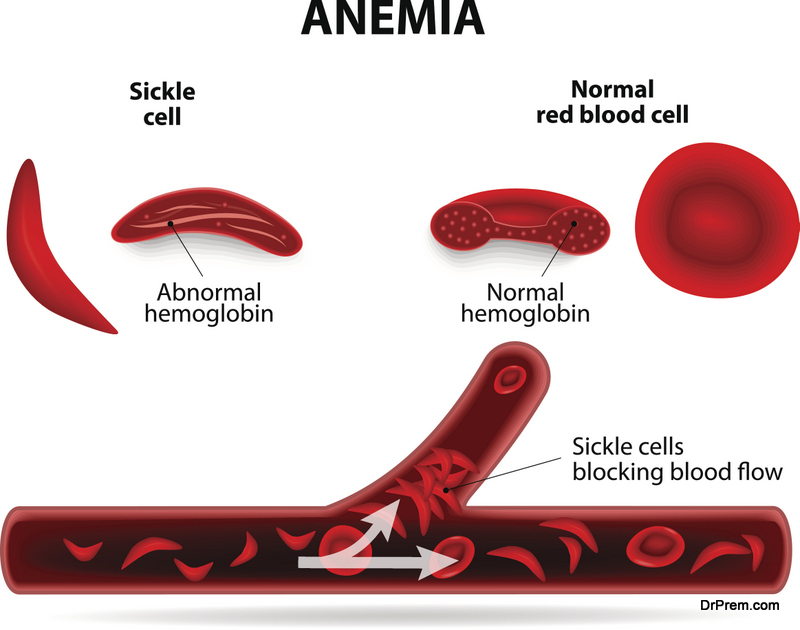Sickle cell anemia is a disease of genetic imbalance, and this disorder results in the production of abnormal hemoglobin in the body. The red blood cells in our body are responsible for supplying oxygen throughout our body but in case of this disorder, the oxygen supply gets stuck because the red blood cells become brittle and stick to each other in shape of a sickle. Improper supply of oxygen in our body can result in fatigue, vision problems, excess pain, jaundice, kidney problems, gall bladder stones, ulcer of the leg, etc. There is no complete cure of this disease, but certain home remedies and use of natural herbs along with the treatment can control the situation, but consult your doctor before you incorporate any such substitutes in your regime. Here are some of the most effective home remedies for sickle cell anemia.
Effective home remedies for sickle cell anemia
Dietary intake
 Diet plays an important role in fighting this disastrous disease. A balanced diet consisting of plenty of fruits and vegetables is recommended in order to fight this disorder. Add a protein-rich diet to your diet regime consisting of whole milk, dairy products, poultry, beans, meat, etc. and make sure that these products are of standard quality and are not contaminated as patients of this disease cannot afford further infections. Consumption of high-calorie foods like butter, cheese, peanut butter and a variety of whole grains, legumes, and white bread should be favorable to the patients of sickle cell disease. Steer clear of fat-free food and low-calorie foods.
Diet plays an important role in fighting this disastrous disease. A balanced diet consisting of plenty of fruits and vegetables is recommended in order to fight this disorder. Add a protein-rich diet to your diet regime consisting of whole milk, dairy products, poultry, beans, meat, etc. and make sure that these products are of standard quality and are not contaminated as patients of this disease cannot afford further infections. Consumption of high-calorie foods like butter, cheese, peanut butter and a variety of whole grains, legumes, and white bread should be favorable to the patients of sickle cell disease. Steer clear of fat-free food and low-calorie foods.
Blackstrap molasses
Blackstrap molasses is derived from a plant source and is truly a rich source of vitamins and minerals. It is a thick and sticky byproduct of sugar which can be added to milk, gingerbread, baked beans, etc. This is a good source of iron for people who are complete vegetarians. Blackstrap molasses are one of the best home remedies for sickle cell anemia that can replace sugar in cereals, jams, jellies, and many other things. Molasses is also a rich source of calcium, potassium, vitamin B, copper, magnesium, phosphorus, pantothenic acid, inositol, and vitamin E. So this mineral-rich molasses is a very effective home remedy for treating sickle cell anemic condition, but consult your doctor to determine the amount to be consumed.
Warm clothing
 Weather extremities can be avoided, but too much of cold and heat can increase the crisis. Patients of this disorder have more difficulty in staying warm due to iron deficiency. They may experience chills and pain in cold weather. Sometimes they develop cold hands and feet even in moderate weather, so they need to incorporate warm clothing and other methods to keep themselves warm and increase their iron intake at such times. To avoid feeling excessively hot, stay hydrated and wear comfortable cotton clothes so that your body can maintain an even temperature.·
Weather extremities can be avoided, but too much of cold and heat can increase the crisis. Patients of this disorder have more difficulty in staying warm due to iron deficiency. They may experience chills and pain in cold weather. Sometimes they develop cold hands and feet even in moderate weather, so they need to incorporate warm clothing and other methods to keep themselves warm and increase their iron intake at such times. To avoid feeling excessively hot, stay hydrated and wear comfortable cotton clothes so that your body can maintain an even temperature.·
Exercise – one of the most effective home remedies for sickle cell anemia
Sickle cell patients have fewer blood cells than a normal person, so the supply of oxygen in the body is restricted, making exercise regime more difficult. So the support of peer group and coaches is very important. Any symptoms of breathlessness, muscle pain, fatigue, etc. should compel the patient to stop playing or exercising immediately. Patients of this disorder should not overdo any physical activity and should take rests in between any exercising regime. Experts recommend drinking plenty of water during and after any physical activity to keep the hydration level under control. Sickle cell patients should avoid swimming. Low impact exercises and physical activities like walking, yoga, and breathing exercises are recommended to build strength.
Fluids
 Patients of sickle cell anemia should increase their fluid intake. Medical experts recommend at least 8 glasses of water every day. Water or fluid intake reduces the chances of sickle cell formation by diluting the blood. Dehydration can worsen the sickle cell crisis. Consume water and fluids within small intervals. Patients of sickle cell disease should carry their water bottle everywhere without fail. While exercising increase the water intake even more and stay indoors and hydrated in dry, hot and humid climates. Increased consumption of water can also reduce pain crisis during physical activity.
Patients of sickle cell anemia should increase their fluid intake. Medical experts recommend at least 8 glasses of water every day. Water or fluid intake reduces the chances of sickle cell formation by diluting the blood. Dehydration can worsen the sickle cell crisis. Consume water and fluids within small intervals. Patients of sickle cell disease should carry their water bottle everywhere without fail. While exercising increase the water intake even more and stay indoors and hydrated in dry, hot and humid climates. Increased consumption of water can also reduce pain crisis during physical activity.
Nettles
Nettle is a nutritious plant which contains iron, chlorophyll and vitamin C and is a wonderful herb in the treatment of sickle cell disease. The flower, roots, and leaves hold medicinal content. Boil 3 to 4 tsp nettle leaves or roots and make a tea with deep flavor and aroma for treating sickle cell crisis. This herb is full of nutrients like calcium, folate, beta carotene, magnesium, phosphorus, selenium, sulfur, zinc, and vitamin B. Do consult your doctor before you introduce this herb for the treatment of sickle cell disease.
Spirulina
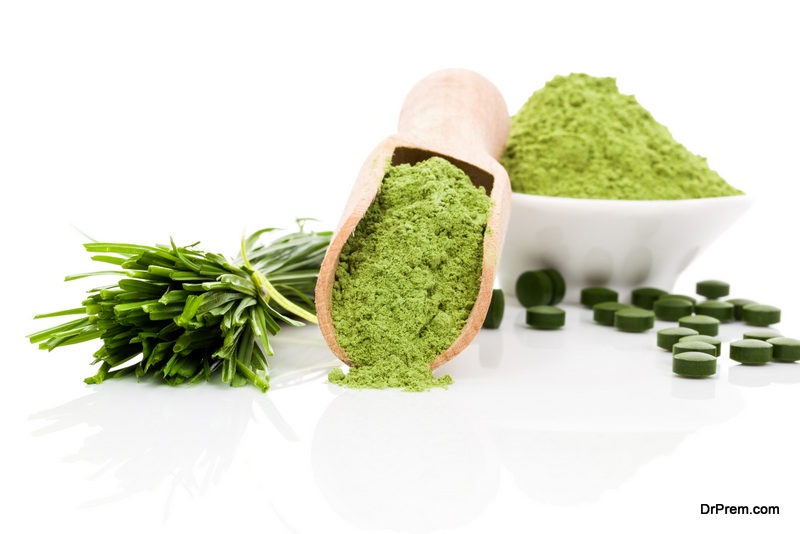 Spirulina belongs to the category of algae. It is a rich source of vitamins and minerals. A high content of iron present in spirulina herb makes it a good source to increase hemoglobin level in the body. Experts consider this herb is as an effective treatment of sickle cell disease. But always take it as alternative medicine. Spirulina is available in the form of powder, flakes, and pills in the market, but take it only on the recommendation of your doctor. People suffering from lupus should avoid the use of this natural medicine.
Spirulina belongs to the category of algae. It is a rich source of vitamins and minerals. A high content of iron present in spirulina herb makes it a good source to increase hemoglobin level in the body. Experts consider this herb is as an effective treatment of sickle cell disease. But always take it as alternative medicine. Spirulina is available in the form of powder, flakes, and pills in the market, but take it only on the recommendation of your doctor. People suffering from lupus should avoid the use of this natural medicine.
Garlic
Garlic is a culinary spice, which is also popular for its traditional medicinal qualities. Numerous people have used garlic as an alternative medicine to treat a sickle cell crisis. One can consume the clove of garlic as a supplement for treating many disorders. Medical experts recommend two cloves of garlic or 600 to 900 mg of garlic consumption for the patients of sickle cell disease. Kyolic garlic or the garlic extract has also been beneficial for reducing blood inclusions which are responsible for blood cell malformation. Take consultation from your doctor bore ingesting garlic or garlic extract in your diet.
General remedial measures
 Sickle cell anemia is a disorder of red blood cells. People suffering from this disease need a lot of care and support from everybody around. One can take care of the mild and moderate painful conditions of this disease at home. One can do this by taking prescribed medicines like acetaminophen, etc. For more severe pain, consult your doctor immediately. Take extra precaution while traveling to high altitudes. There is less oxygen in there and one may require supplemental oxygen like an oxygen mask.
Sickle cell anemia is a disorder of red blood cells. People suffering from this disease need a lot of care and support from everybody around. One can take care of the mild and moderate painful conditions of this disease at home. One can do this by taking prescribed medicines like acetaminophen, etc. For more severe pain, consult your doctor immediately. Take extra precaution while traveling to high altitudes. There is less oxygen in there and one may require supplemental oxygen like an oxygen mask.
If a school going child is suffering from this disorder then it is necessary to make the concerned teachers aware of the child’s needs and condition. Send written instructions in the child’s diary, like name and telephone no. of the doctor. Inform the teacher that your child may need to drink water at regular intervals. Moreover, your child may need to go to the bathroom more frequently. Reduce stress by learning stress management techniques and avoid alcohol.
Essential nutrients for children suffering from sickle cell anemia
Apart from medicines, the suffering of sickle cell anemic patients can be greatly alleviated by including some naturally available minerals and vitamins in their daily diet. Following are the vitamins and compounds for children with sickle cell anemia: vitamin B12, zinc, folic acid, l-arginine, l-carnitine, fish oil, beta-carotene, magnesium, vitamin A, vitamin B6 and aged garlic extract.
1. Vitamin B12
 Lack of vitamin B12 is a major contributory factor in sickle cell anemia. Lack of it equally affects both children and adults. Tests have indicated that for patients with low levels of vitamin B12 in their blood, intramuscular injections of 1 mg of vitamin B12 administered per week for a course of 12 weeks led to a noticeable improvement in their condition. It’s not yet established as to whether this injection can be substituted by an oral dose and still retains its effectiveness. Vitamin B12 is an extremely low toxic mineral and even an overdose of it doesn’t have any significant ill-effects. Theoretically, vitamin B12 supplements should be avoided by people allergic to cobalamin and cobalt. Animal products like meat, liver, fish, eggs, milk and their derivatives are considered to be abundant sources of vitamin B12.
Lack of vitamin B12 is a major contributory factor in sickle cell anemia. Lack of it equally affects both children and adults. Tests have indicated that for patients with low levels of vitamin B12 in their blood, intramuscular injections of 1 mg of vitamin B12 administered per week for a course of 12 weeks led to a noticeable improvement in their condition. It’s not yet established as to whether this injection can be substituted by an oral dose and still retains its effectiveness. Vitamin B12 is an extremely low toxic mineral and even an overdose of it doesn’t have any significant ill-effects. Theoretically, vitamin B12 supplements should be avoided by people allergic to cobalamin and cobalt. Animal products like meat, liver, fish, eggs, milk and their derivatives are considered to be abundant sources of vitamin B12.
2. Zinc
Lack of zinc can have a marked effect on the health of sickle cell anemic patients. Zinc deficiency particularly affects children more than any other age group by hindering their growth. In a clinical trial, it was found that an intake of 25 mg of zinc six times a day, continued for four months till one year resulted in a significant decrease of damaged red blood cells from 28% to about 18%. An interesting observation was that zinc was most effective with people who had the highest percentage of damaged red blood cells, it was not a game changer for people with low level of damaged red blood cells.
Not just children, even adults too can be benefited from the right amount of zinc since it can massively speed up the healing time of chronic leg ulcers that afflicts about 76% of adults suffering from sickle cell anemia. Oysters, lobsters and red meats like beef, lamb and liver are foods rich in zinc. An overdose of zinc can have significant side effects like suppression of copper and iron absorption that can lead to cholesterol and urinary complications. Hence, its intake must be very carefully prescribed.
3. Folic acid
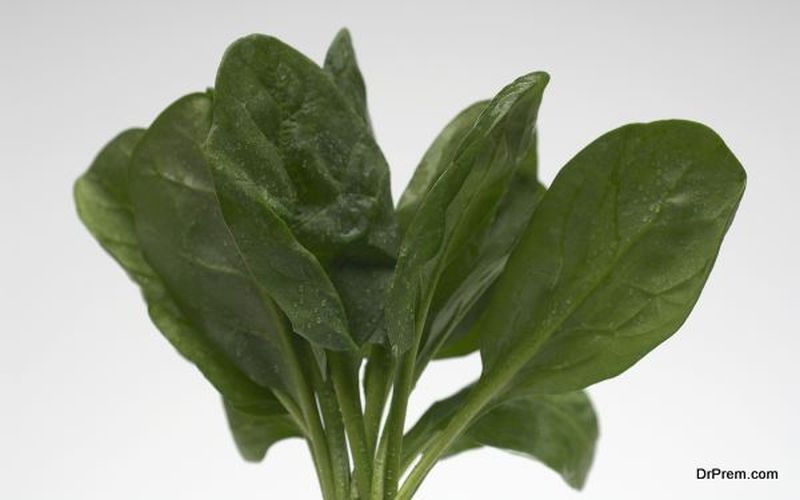 1 mg of folic acid allied with 6 gm of vitamin C, 1.2 gm of vitamin E significantly improves the hematocrit index of most patients. Homocysteine levels are much higher in such people and it can expose them to cardiovascular diseases. More importantly, it can greatly reduce the level of pain experienced by them. One trail recorded that a dose of 5 mg of folic acid per day helped in lessening the painful swelling of hands and feet. Folic acid is non-toxic in most cases and hence has no marked side effects. Leafy vegetables like spinach and asparagus, dried legumes, egg yolks, fortified grains like pasta cereals, etc., are rich in folic acid.
1 mg of folic acid allied with 6 gm of vitamin C, 1.2 gm of vitamin E significantly improves the hematocrit index of most patients. Homocysteine levels are much higher in such people and it can expose them to cardiovascular diseases. More importantly, it can greatly reduce the level of pain experienced by them. One trail recorded that a dose of 5 mg of folic acid per day helped in lessening the painful swelling of hands and feet. Folic acid is non-toxic in most cases and hence has no marked side effects. Leafy vegetables like spinach and asparagus, dried legumes, egg yolks, fortified grains like pasta cereals, etc., are rich in folic acid.
4. L-arginine
One trial has shown that a dose of 100 mg of alpha amino acid l-arginine per 1 kg of body weight, taken three times a day for continuous five days achieved a marked improvement in the reduction of pulmonary hypertension. The test result was validated by a one-sixth decline in the pulmonary artery systolic pressure. However, this needs to be corroborated by other experiments. This doesn’t have any appreciable side effects. Mostly, this compound is naturally produced by the human body but in the event it needs to be externally supplanted, it can be found in animal products like cottage cheese, milk, yogurt and plant products like oatmeal, flour, peanuts, walnuts, cashews, almonds, cooked soybean, pumpkins, etc.
5. L-carnitine
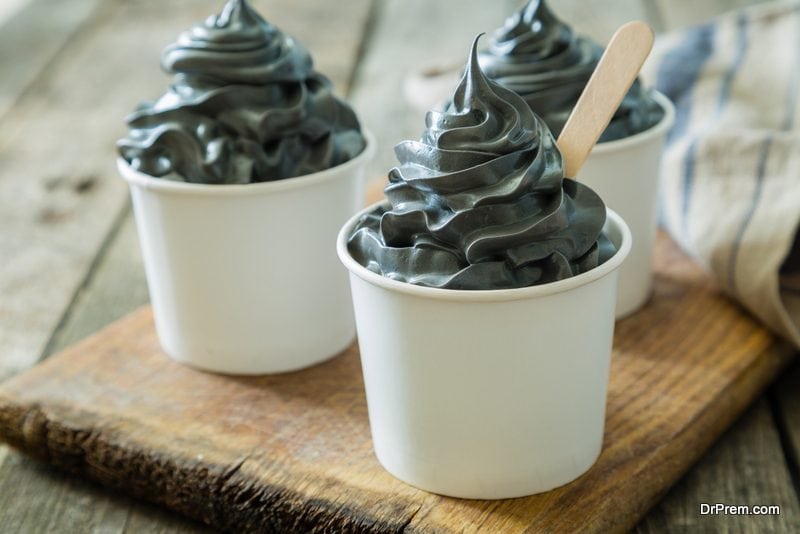 A 50 mg dose of l-carnitine per 1 kg of body weight for a period of 180 days results in lesser pain and a noticeable improvement in diastolic heart function. It also brings down abnormally high blood pressure. This medication primarily benefits children. It doesn’t have any noticeable side effects. It can be easily supplanted from red meats like pork, beef and dairy products like cheese, whole meal, ice cream, etc.
A 50 mg dose of l-carnitine per 1 kg of body weight for a period of 180 days results in lesser pain and a noticeable improvement in diastolic heart function. It also brings down abnormally high blood pressure. This medication primarily benefits children. It doesn’t have any noticeable side effects. It can be easily supplanted from red meats like pork, beef and dairy products like cheese, whole meal, ice cream, etc.
6. Fish oil
An experiment was conducted with a prescribed dose of 250mg of fish oil consumed per 1 kg of body weight daily. This was continued for a duration of six to seven months. It was tried in combination with other substances like vitamin E, vitamin C and zinc. A positive change was observed in the form of lesser malignant cells, particularly in potions where zinc was a key ingredient. Fish oil in combination with menhaden oil resulted in the patient suffering from lesser periods of pain. Also, the number of times such pain struck during the day came down. Mainly, it is extracted from fishes rich in omega 3 fatty acids like tuna, salmon, cod , catfish, etc. It is also beneficial for your child’s overall health.
7. Beta-carotene
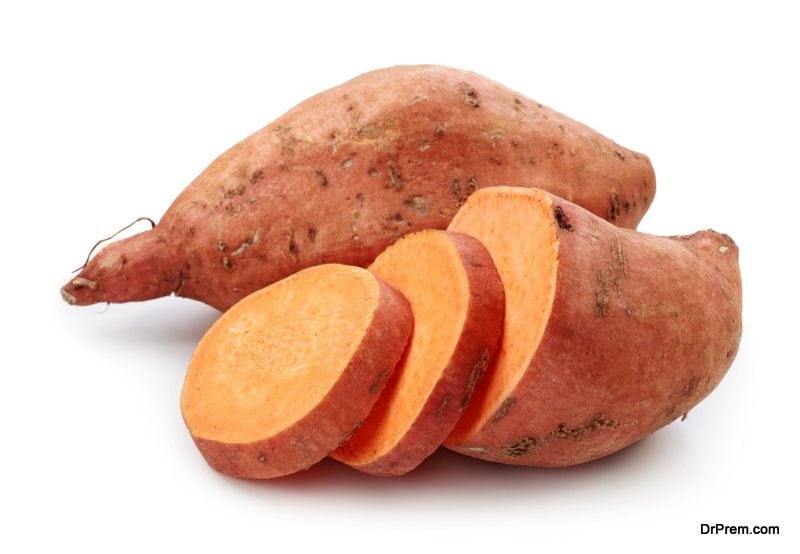 Antioxidants protect body cells from oxygen induced damage. It’s been proved that sickle cell anemic patients lack sufficient amounts of antioxidants in their systems. Beta-carotene allied with vitamin E can rectify this problem by increasing the supply of antioxidants which bring down the number of defective cells. Amount to be administered can vary from patient to patient and is determined by the doctor. It has no known side effects apart from carotenosis, a rare disease where the skin pigmentation changes to orange. Too much of synthetic beta-carotene can also be fatal for chain smokers since it may enhance the chances of contracting lung cancer. Fruits and vegetables like carrot, carrot juice, spinach, sweet potatoes in any form can provide us with the required amount of beta-carotene.
Antioxidants protect body cells from oxygen induced damage. It’s been proved that sickle cell anemic patients lack sufficient amounts of antioxidants in their systems. Beta-carotene allied with vitamin E can rectify this problem by increasing the supply of antioxidants which bring down the number of defective cells. Amount to be administered can vary from patient to patient and is determined by the doctor. It has no known side effects apart from carotenosis, a rare disease where the skin pigmentation changes to orange. Too much of synthetic beta-carotene can also be fatal for chain smokers since it may enhance the chances of contracting lung cancer. Fruits and vegetables like carrot, carrot juice, spinach, sweet potatoes in any form can provide us with the required amount of beta-carotene.
8. Magnesium
Sickle cell anemic patients have low levels of magnesium in their red blood cells. Low magnesium levels lead to dehydration of red blood cells and a corresponding increase in other symptoms, particularly in the magnitude and duration of intense pain. A dose of 540 mg of magnesium administered over a course of 180 days results in gradual rectification of malignant red blood cells followed by a drastic reduction of pain for the patient. Magnesium pidolate is the type of magnesium tried out in this medication. Side effects have not been ascertained. Spices, nuts, cereals, green leafy vegetables like spinach, coffee, tea, and vegetables supply a lot of magnesium in our daily diet.
9. Vitamin A

Antioxidants help in preventing the formation of free radicals which can totally damage the cell structures in our bodies. This can result in malignant cancerous cells. This can be prevented by a combination of vitamin A, vitamin E and vitamin C. It must be noted that vitamin A on its own might not be totally effective and it needs to be allied with other minerals. A dosage of 440- 460 IU can bring down the number of damaged cells by about 40% to 45%. It can be administered to all age groups. It has no known side effects. Carrots, cod liver oil, liver of beef and pork provide a wealth of vitamin A in our daily diet.
10. Vitamin B6
It is probable that sickle cell anemic patients possess elevated blood levels of homocysteine unlike healthy people who have much lower levels. High levels of homocysteine bring a much higher possibility of suffering a stroke. Experiments conducted in controlled conditions have displayed that vitamin B6 has anti-sickling effects on the red blood cells of sickle cell anemia afflicted patients who anyways have much lower levels of the required vitamin. 50 mg of vitamin B6 given twice daily to deficient patients was found to have rolled back the vitamin deficit. But there was no overall upturn in the condition of anemic people. Hence, the benefits of administering vitamin B6 appear limited. The dosage must be determined by an experienced physician since overdose can have side effects. It’s found in foods like meats, vegetables, bananas, etc.
11. Aged garlic extract
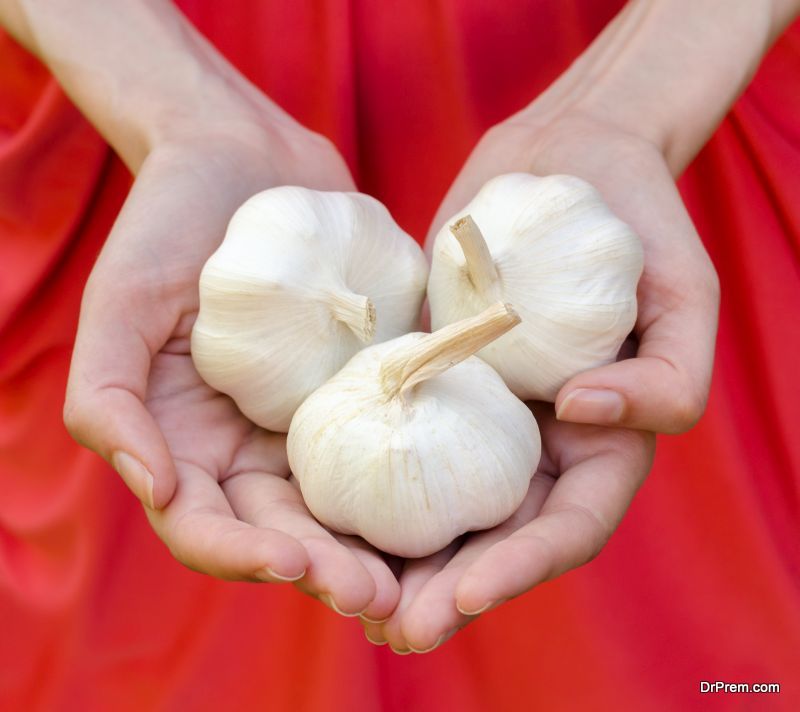 Six grams of aged garlic extract allied with 6 grams of vitamins C; 1200 mg of vitamin E taken every day for a complete course of six months can make a positive difference to the anemic condition of patients with sickle cell disease. It also results in a sharp mitigation of pain for patients compared to other patients who have a medication with only folic acid as the key ingredient. Garlic extract can be safely given to people across all age groups. It has no known side effects and can be easily extracted from any variety of garlic which has aged just about the right amount.
Six grams of aged garlic extract allied with 6 grams of vitamins C; 1200 mg of vitamin E taken every day for a complete course of six months can make a positive difference to the anemic condition of patients with sickle cell disease. It also results in a sharp mitigation of pain for patients compared to other patients who have a medication with only folic acid as the key ingredient. Garlic extract can be safely given to people across all age groups. It has no known side effects and can be easily extracted from any variety of garlic which has aged just about the right amount.


